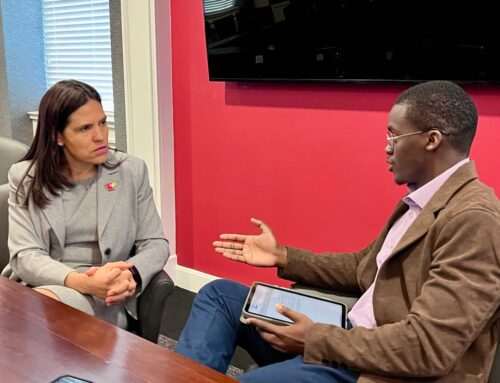By Jacob Maslow – Branded Content
As with many things in life, the best way to walk away from a motorcycle accident is to avoid getting into a crash in the first place. Like Benjamin Franklin once quipped, “An ounce of prevention is worth a pound of cure.”
This article will discuss some of the most effective ways to stay safe biking on the road.
Don’t Rely Solely on Braking and Swerving
According to the Hurt Report, considered the definitive study of motorcycle safety, the average time between the start of an accident and the actual moment of collision is just under two seconds.
Meanwhile, all motorcyclists are limited by human reaction times, which average about 1.5 seconds. As a result, even the most skilled riders have an incredibly tight margin of error when reacting to an accident. Therefore, you need to take other steps to avoid relying on braking and swerving alone.
Maintain High Visibility on Your Bike
Many motorcycle accidents caused by other automobile drivers happen because the driver didn’t see the biker. To help prevent this, do as much as possible to help other motorists see you.
Whenever you can, wear brightly colored clothing, and use high beams rather than low beams even during the day. Alternatively, you can use a light modulator (legal in all 50 US states and every province in Canada), which makes your motorcycle’s headlight and taillights blink between high and low beams, increasing your visibility to other drivers.
Finally, avoid vehicle blind spots by driving near the front fender of a car, especially during heavy traffic.
Put Space Between Your Motorcycle and Cross-Intersection Traffic
Whenever there is a chance for a car to turn in front of you or make a lane change in your path of travel, always be sure to give them plenty of space. This increases the chance that the car driver will see you and gives you more time to react in the event of a possible collision.
Many motorists cause accidents by making a left turn without seeing a motorcycle that is driving straight ahead. If you’re the biker in that situation, drive as close to the curb opposite the car as possible.
Pay Attention to Vehicles Near Your Motorcycle
This one seems like a no-brainer, but sometimes the most obvious answers are the best ones. Just like passengers in a crosswalk need to keep their eyes open in case a driver doesn’t seem them—or doesn’t care—and takes a left turn through the crosswalk, you need to keep your head on a swivel.
Whenever a car is near enough that it could violate your right-of-way, keep an eye on it until you’ve completed your turn, crossing, etc. Don’t take your eyes completely off of that car until after you’re past the point where they could turn into you or cause an accident.
Stop Safely at Intersections
No, this doesn’t mean reaching a complete stop (although you should also be doing that). Instead, this point is about avoiding stopping in the middle of a lane behind a car or other vehicle.
At a stop sign or red light, stop on the right rear side of the vehicle in front of you. Stopping on the left side is acceptable if there is no oncoming traffic on that side. Coming to a stop on one of the sides of a vehicle will keep you from getting pinned if a car collides with you from behind.
Avoid Riding at Night or in Bad Weather
All the dangers posed to motorists by night conditions or inclement weather are multiplied exponentially when it comes to motorcycles. So if you want to avoid risking an accident due to poor visibility, slick roads, or a higher risk of drunk drivers, leave the bike home until the sun comes out and the temperature is above freezing.
We hope this article has given you a better idea of how to keep yourself safe on the road. However, if you do end up in a motorcycle accident despite following all of these safety steps, be sure to secure counsel to represent you as needed.
Photo Courtesy // Jacob Maslow //





